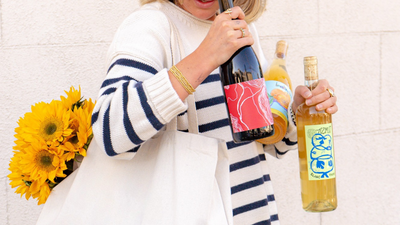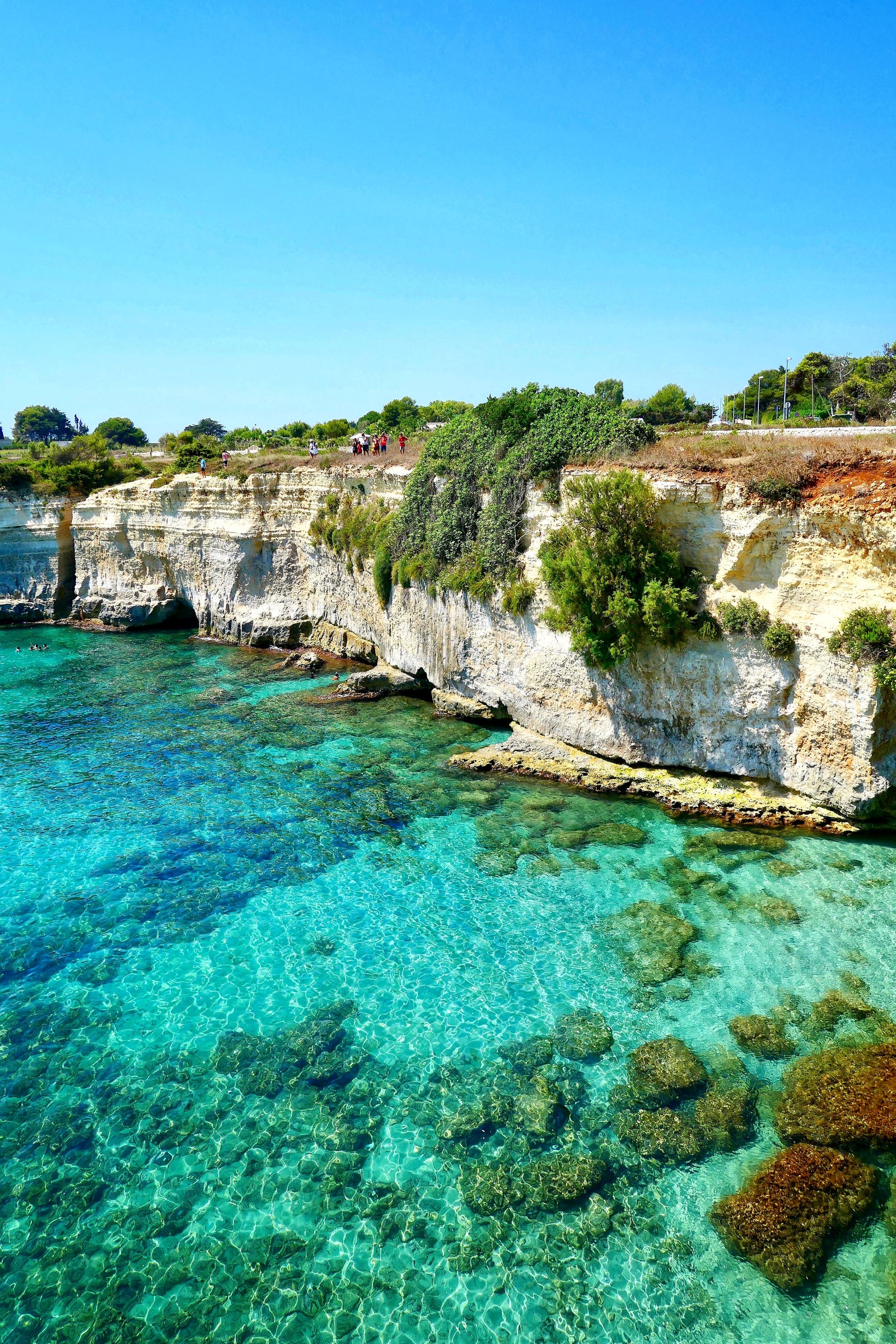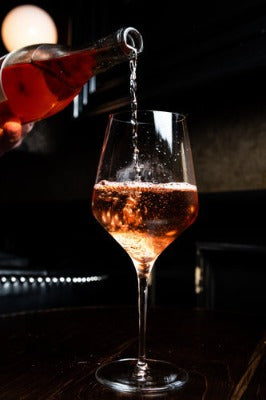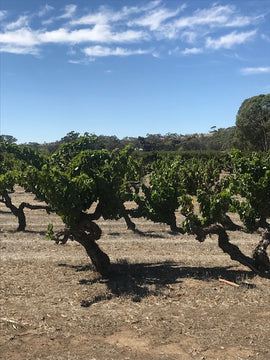Puglia
Which do you think came first: the boot or the Boot?
In a sense, Puglia - our destination this month - might be Italy’s most influential region. Stepping out from the southeastern coast into the Adriatic and Ionian Seas, it’s invariably described “the heel” of the country’s reputed boot; remove it and Italy is a flat footed peninsula resembling no specific type of footwear - and, who knows, maybe the history of global fashion plays out quite differently? While I can’t find any concrete instance of Italy’s cobblers cribbing from its cartographers, the historical record suggests that semi-accurate maps predated high heels by an epoch or two. In 75 AD, Pliny the Younger was comparing Italy’s shape to a an oak leaf, “longer than it is broad''; the first reference I can find to Italy looking like a boot doesn’t come until 1695, when the Thesauras Geographicus: A New Body of Geography, Or, A Compleat Description of the Earth describes it as “stretched forth toward the South, as it were a Peninsule, in the form of a Boot..." Clearly the intervening years presented ample opportunity for would-be designers to find an atlas and imagine new ways to elevate the local piedi.
Even if this isn’t how the future of shoes actually took shape, Puglia (Apulia in Latin) would still be responsible for a decent portion of Italy’s best quintessence. Geographically it’s mostly a flat plain and spectacularly fertile - hosting more than 50 million olive trees responsible for 40% of Italy’s (and 12% of the world’s) olive oil. Figs, wheat and almonds also grow in abundance here, and the regional cuisine is famed for spotlighting all this agricultural bounty. Puglia boasts ancient forests (Forestra Umbra in Gargano National Park) and ruins (the “white city” of Ostuni, its buildings coated with chalky limestone paint during the Plague due its antibacterial properties); the Baroque architectural splendor of Leccia (“the Florence of the South”); and a combined 500 miles of stunningly gorgeous Ionian and Aegean coastline that must be what people mean when they say “Ultramarine.” If and when I ever get to Italy, I am definitely going to Puglia.
As for the wine, there is a lot of it as you might expect: Puglia ranks 2nd, trailing only Veneto, in terms of vino per annum by volume. The primary red indigenous grapes are Negroamaro (which translates to “black bitter”) and Primitivo ( which is genetically identical to Zinfandel) and they generally produce full bodied and fruit forward wines due to the long, hot summer growing season. White wine production is smaller, but there are a decent amount of crisp, easy drinking whites made from local varietals like Verdeca, Bombino Bianco and Greco Bianco. In general, Puglian wines are regarded as solid everyday table wines; not particularly expensive, not terribly distinguished, but well made and good with food.
Our two selections this month are a little more interesting: the white wine comes from the new-to-me Minutolo grape, which was once known as Fiano Aromatico, and has been cultivated in Puglia since 1200. As its old name suggests, it is wonderfully aromatic, and also able to retain its acid and low alcohol even during the baking local summers. I Pastini is one of a handful of wineries that has helped bring it back from virtual extinction in the last two decades. The red is made from the aforementioned Negroamaro varietal, and is part of a project by a longtime grower family to prove that Puglia is capable of making more sophisticated red wines. At 14% abv, it is actually relatively light for the area, with great depth of fruit married to a savory, herbaceous complexity rare for the region and grape.
Salut,
Alan Hicks
Wine Buyer
Noe Valley
|
Region: Puglia, Italy |
About the Winery: I Pàstini is a small, family-run winery in the Valle d’Itria in eastern central Puglia. Founded by Gianni Carparelli and his father Donato, they grow their grapes on land their ancestors worked: a beautiful limestone plateau overlooking the Adriatic Sea that is co-planted to ancient, (multi-millennia old!), olive groves. The Valle d’Itria is located roughly in between the coastal towns of Brindisi and Bari, and is made up of a dozen or so small, agrarian towns that are distinguished by their “trulli,” conically-shaped stone structures that historically served to house people, store grain and other staples, and feed livestock. This area experiences hot days during the growing season but they are not excessive and are tempered by cool nights and foggy mornings, and of course the influence of the nearby Adriatic Sea. This Valley is known as the white wine production center of Puglia. After studying the history of the indigenous grape varieties out of this area, the Carparellis sourced vine cuttings of exactly what they wanted to plant, selecting three local white grapes, Verdeca, Bianco d’Alessano, and Minutolo, and the local red grape, Susumaniello. After vinifying their wines in a neighbor’s cantina for a number of years they built their own winery and cellars, which came online in 2012. They have been certified organic since the 2019 vintage.
About the Winemaking: Grown on red clay and limestone soils. Temperature-controlled fermentation in stainless steel tanks. Aged in stainless steel tanks for 5 to 6 months No malolactic fermentation Aged in bottle for 3 months
Tasting Notes: Straw yellow color enriched with vivid greenish reflections. Intense scents, endowed with a distinct aroma, with strong floral fragrances of hawthorn, jasmine and wisteria, citron lime and green apple, and softer fruity notes such as yellow peach, mango, pineapple and exotic fruits in general. Crisp, mineral, savory, balanced, with good acidity and with good aging potential. |
|
Winemakers: Donato and Ginni Carparelli |
|
|
Price per bottle / Price per case $25 $270 |
|
|
Suggested Food Pairing: Burrata salads; Orecchiette con Cime di Rapa (Little ears pasta with turnip tops) (see recipe); Cozze ripiene (stuffed mussels with tomato sauce); Spaghetti ai ricci di mare (Spaghetti with sea urchins); any shellfish, seafood salad or fish dishes. |
|
|
Region: Salento, Puglia, Italy |
About the Winery: Feudi di Guagnano is dedicated to making world class wines from the indigenous grape varieties of Negroamaro and Primitivo grown in Apulia in southern Italy. In 2002 the three grandsons of the original growers realized that the rich and deep flavors from both grapes could be made into outstanding aging-worthy wines that could be as interesting as more prominent Italian wines such as Barolos and Brunellos. About the Winemaking: This is the 100% Negroamaro Riserva The vineyards are over 80 years old and the harvest is carried out in the middle of October. The best grape bunches are separated from the others and put in small wooden boxes. Then the grapes semi-dry for about 30 days in some well-aired rooms. The drying process reduces the liquid part contained in the berries by around 40 percent. After the drying process, the grapes are crushed and destemmed softly. The fermentation lasts about two weeks. The resulting wine ages for 12 months in French oak barrels. Tasting Notes: Aromas are blackberries, dark plums, sweet almonds, and hints of cinnamon and tar. Flavors include blackberries, dark chocolate, and hints of cocoa and black pepper. |
|
Winemakers: Gianvito Rizzo, |
|
|
Price per bottle / Price per case $33 $356.40 |
|
|
Suggested Food Pairing: Filet Mignon, Pork Chops, Slow baked Lamb and Potatoes, BBQ Pork, smoked brisket, Chicken Mole, and Carne Asada. Pepperonata (a stew of onion garlic red peppers and tomatoes cooked with olive oil) |
|
Orecchiette con le Cime di Rapa (Apulian Orecchiette With Broccoli Rabe)
Perhaps the quintessential Puglian dish. Translates as "orecchiette with turnip greens” which we call Broccoli Rabe. You can make as is, add Italian sausage, or leave out anchovies to make it fully vegetarian.
Ingredients
For the Breadcrumbs:
- 4 ounces (115g) rustic bread, cut into 3/4- to 1-inch pieces
- garlic clove (5g), minced
- 2 tablespoons (30ml) extra-virgin olive oil
- Kosher salt and freshly ground black pepper
For the Pasta:
- 4 cup (60ml) extra-virgin olive oil, plus more for drizzling
- 4 anchovy filets (5g)
- 3 garlic cloves (15g), minced
- 1/2 teaspoon red pepper flakes
- 12 ounces (340g) dried orecchiette
- 1 pound (450g) broccoli rabe (rapini), leaves and florets picked from stalks, stalks discarded or reserved for another use
Directions
- For the Toasted Breadcrumbs: If using fresh or slightly stale bread, adjust oven rack to middle position, and preheat oven to 325°F (165°C). (If using fully stale and dried bread, skip the baking step.) Arrange bread in a single layer on a rimmed baking sheet, and bake until completely dried, 20 to 30 minutes. Remove from the oven, and allow to cool to room temperature, about 5 minutes. Transfer bread to food processor bowl (set aside but don't clean rimmed baking sheet), and pulse until reduced to small crumbs, taking care not to over-process into a fine powder, 8 to 10 pulses.
- Combine breadcrumbs, garlic, and 2 tablespoons (30ml) oil in a large skillet, and cook over medium-low heat, stirring and tossing occasionally, until crisp and golden brown, 8 to 10 minutes. Season with salt and pepper to taste. Transfer toasted breadcrumbs to a reserved rimmed baking sheet, spread into an even layer, and set aside to cool to room temperature. Wipe out the skillet.
- For the Pasta: Bring a large pot of salted water to a boil over high heat. Meanwhile, combine 1/4 cup (60ml) oil, anchovies, and garlic in a now-empty skillet. Cook over medium-low heat, stirring and breaking up anchovies occasionally with a wooden spoon, until anchovies have dissolved and garlic has softened and is just beginning to turn lightly golden, about 5 minutes. Add red pepper flakes and continue to cook, stirring, until fragrant, about 30 seconds. Remove skillet from heat.
- Add broccoli rabe to boiling water and cook, stirring frequently to keep submerged, until floret stems are barely tender and leaves have softened, about 1 minute. Using a spider skimmer, fine-mesh strainer, or large slotted spoon, drain rabe while keeping boiling water in the pot; transfer rabe to a plate and set aside.
- Add orecchiette to boiling water and cook, stirring frequently for the first 30 seconds to prevent pasta from sticking. Once pasta has cooked for 5 minutes, transfer 1 cup (240ml) of pasta cooking water to the skillet; continue cooking pasta. Return skillet to high heat and bring to a boil, swirling pan and stirring constantly until cooking water emulsifies with olive oil-anchovy mixture, 1 to 2 minutes. Reduce heat to low while pasta finishes cooking to prevent liquid from over-reducing.
- Meanwhile, continue cooking pasta until it is softened on the exterior, but well shy of al dente and still uncooked in the center (about 3 minutes less than the package directions). Using a spider skimmer, transfer pasta to skillet along with reserved broccoli rabe. Alternatively, drain pasta using a colander or fine-mesh strainer, making sure to reserve at least 2 cups (475ml) pasta cooking water.
- Increase heat to high and cook, stirring and tossing rapidly, until pasta is al dente and sauce is thickened and coats noodles, 2 to 3 minutes, adding more pasta cooking water in 1/4 cup (60ml) increments as needed. At this point, the sauce should just pool around the edges of the pan; it will continue to tighten up in the time it takes to plate and serve, so make sure it's a little looser than the ideal serving consistency. Season with salt to taste.
- Remove from heat, divide pasta between individual serving bowls, drizzle generously with olive oil, sprinkle with breadcrumbs, and serve right away.





